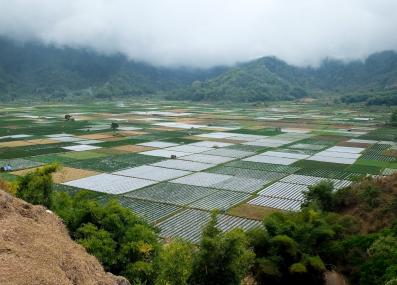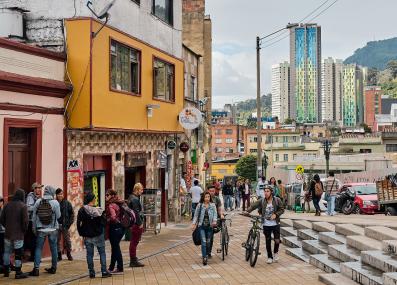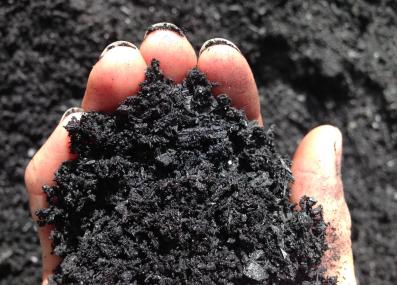New to Climate Change?
Organic Waste
Organic waste is anything made from plant and animal matter that gets thrown into the garbage. Most often, organic waste refers to waste food, but it also includes yard waste, paper, wood, some fabrics, sewage and manure. Both in the U.S. and worldwide, organic waste makes up roughly three-quarters of the waste stream.1
Organic waste contains carbon. Therefore, as it decomposes, the carbon turns into carbon dioxide (CO2) and methane, both of which are climate-warming greenhouse gases. Methane is of special concern because it is a powerful greenhouse gas: in the U.S., methane from food waste does as much to warm the planet as fifteen coal-fired power plants.2
To manage organic waste effectively, we need to first adopt strategies to create less waste, and then dispose of what we do create in ways that do not contribute to climate change. But this will only succeed if policymakers set up easy-to-use waste disposal systems.
Minimizing waste
Worldwide, 25-30% of food is wasted, making its way to dumpsites and landfills.3 The less food we throw away, the fewer greenhouse gases our waste system generates.
Individuals can help by being careful not to buy more than they need. But much waste happens at grocery stores and restaurants, where overstocked food or perfectly edible food that is misshapen or near its sell-by date is often thrown out. This is mostly a logistical problem of getting the food to people who will eat it, and a growing number of services and apps are helping businesses do just that: discounting food before it’s thrown out, picking up food to bring to charities, and alerting customers when leftover food is available. These services are often hyper-local, so city and local governments can also work to attract and advertise them.
Governments and businesses can also make sure they aren’t discouraging people from eating perfectly good food. In the United Kingdom, major supermarkets have stopped using most “best before” labels so that customers won’t reject food just because the date on a label is approaching.
Putting waste to good use
Still, some organic waste will always be thrown away. From a climate perspective, the worst thing to do with this waste is put it in a landfill, where, deprived of oxygen, it will produce powerfully climate-warming methane.
Some organic waste—mainly paper and textiles—can be recycled. The rest can be kept out of landfills by putting it to use.
One option is to turn waste into compost or biochar and use it in farms and gardens to help grow crops. This has the added benefit of replacing ammonia-based fertilizers, which themselves contribute to climate change. In Chile, home and neighborhood composting is the backbone of a national organic waste strategy. The country continues to invest in new composting plants and provide public education on the benefits of composting. Chile is also considering a tax on landfilled waste to nudge citizens toward composting their organic waste, which would be phased in once additional infrastructure is in place.
Organic waste can also be turned into fuel. Facilities called “anaerobic digesters” mix all kinds of organic waste with microorganisms to make “biogas,” a mixture mainly of methane and CO2. But instead of letting these gases leak into the atmosphere, the biogas is burned for heat and electricity. If managed well, biogas does not contribute to the buildup of greenhouse gases in the atmosphere and can replace climate-polluting fossil fuels like natural gas.
On a smaller scale, some organic waste can be made into fuel for households. A team at MIT D-Lab turns waste into charcoal for home cookstoves, replacing wood stoves that contribute to deforestation and air pollution.
Changing the waste system
These technologies are only helpful if we use them. That takes infrastructure, easy and universal waste collection, and often, fees or taxes that encourage homes and businesses to properly manage their waste.
One of the world’s great success stories is South Korea, where nearly all food waste is turned into biogas, compost, and animal feed. In 2005, South Korea banned landfilling of food and created a universal system of curbside food waste pickup, which in some areas is collected six days a week. The system is mainly funded by users who must pay for their waste by weight or by bag; these fees also encourage people to waste less.
Effective systems like this are not only a luxury for wealthy countries. In the city of Pune, India, dumping of trash in informal dumpsites has been dramatically reduced by “waste pickers” who once combed through trash for items to sell. These waste pickers formed a trade union and made an agreement with the city to go door-to-door collecting and separating waste. Today, they help homes and businesses set up composting units and bring the remaining waste to facilities for disposal, including in composters and anaerobic digesters.
In places that do not yet have comprehensive systems in place, individuals can make a difference. Wasting less food and buying fewer household products that are hard to recycle (like new clothes or paper towels) is helpful everywhere. And home composting or buying into a private composting service cuts down on landfill waste while also showing demand for composting as a public service. The more people use these services, the more governments will join the trend of providing a central, easy-to-use system to keep organic waste out of landfills.
Published April 30, 2024.
1 U.S. data from U.S. Environmental Protection Agency, "National Overview: Facts and Figures on Materials, Wastes and Recycling." Accessed April 30, 2024. Data is for 2018. Global data from United Nations Environment Programme, "Global Waste Management Outlook 2024." Data is the most recent available for each country in which data was collected. Data from both sources refers to the “municipal solid waste stream,” or what we ordinarily think of as “trash,” picked up from homes and businesses and taken to central facilities for disposal. It does not include waste streams from industry, agriculture, construction, and other large-scale operations with specialized disposal methods.
2 U.S. Environmental Protection Agency, "Quantifying Methane Emissions from Landfilled Food Waste," October 2023.
3 Intergovernmental Panel on Climate Change: "Climate Change and Land: an IPCC special report on climate change, desertification, land degradation, sustainable land management, food security, and greenhouse gas fluxes in terrestrial ecosystems." Chapter 5: Food Security. 2019.










